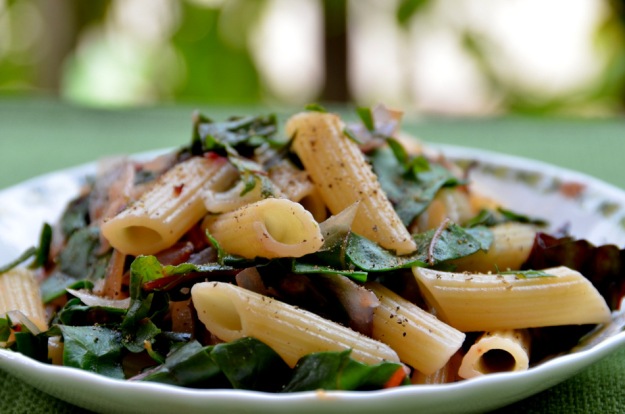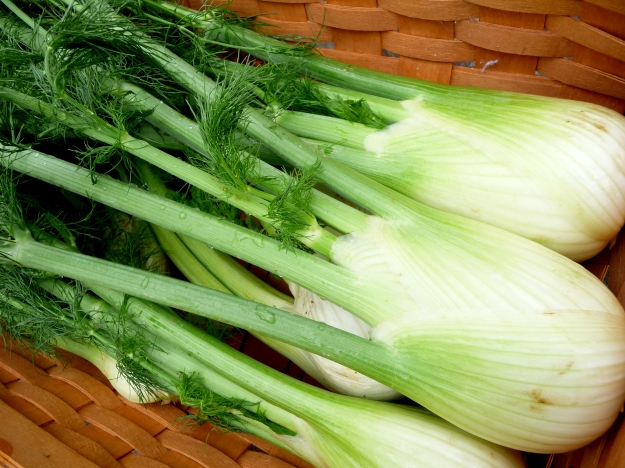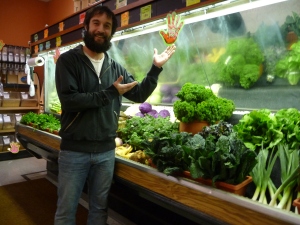Penne with Swiss Chard, Carrots, Onions & Garlic
I prepared several different dishes using Swiss chard this week using a 2-3 minute steam or pan-sauté. But for the last ten years my daily green juices included chard with a variety of other greens, ginger and a green apple. Why? Because this vibrant rich dark green leafy vegetable is a nutrient powerhouse!
But cooking with chard is new to me and I was surprised and pleased at how quick, easy and versatile it is to work with. It can be added to soups, salads, used as a wrap, added to sweet and regular potato mashes, stuffed in roasted onions and simply sautéed with onions, garlic and an array of other vegetables, then tossed with a whole grain like rice, farro or a soba noodle or pasta. Make sure the soba noodle or pasta is 100% whole grain–not just an “organic whole grain” because unless it is appropriately labeled it is impossible to know how much whole grain the product contains.
The key to working with chard is to remember that it is done cooking in less than 3 minutes– whether it is sautéed or steamed. Remembering this tip will result in vibrant, rich greens that make dishes pop with color as well as retain the most nutrients.
Ingredients per person:
- yellow onion, 1/2 diced
- whole garlic, minced
- 1 small carrot
- 1/2 sweet bell pepper
- 6 small-medium rainbow chard, remove stalk and save
- 2/3 cup 100% whole grain penne
- quality California extra virgin olive oil – 2t
- fresh squeezed lemon juice – 1 to 2T
- fresh ground salt and pepper to taste
Directions
- Dice onion and mince garlic and let sit 5 minutes to release healthy sulfurs.
- Wash chard, remove stalks, fold and cut into ribbons; then roughly dice.
- Wash carrot and use spiralizer for quick julienne cuts. Turn carrots and cut again so the carrots are about an inch or so long.
- Boil water for pasta. When you use 100% whole grain pasta, it generally takes about ten minutes. I like my pasta and vegetables al dente.
- While pasta is cooking (be sure to stir to prevent clumping) warm sauté pan on medium heat. Add 1/2 teaspoon of olive oil for each serving.
- Add onions. Use water from the pasta for any additional liquid you need to prevent sticking. The starch from the water adds a wonderful flavor and texture allowing you to cook with less oil and yet retain wonderful flavors.
- When the onion is brown, add garlic and carrots and sauté for another minute or so. The thinly sliced carrots allow you to quickly cook the vegetable resulting in the retention of more flavor and nutrients.
- Add the chopped chard. Turn heat to low, add pasta water, if needed, stir and cover for 2-3 minutes.
- Your pasta should be done by now. Drain pasta and toss with chard, onions, carrots, olive oil, lemon juice. Add fresh ground salt and pepper to taste.
Enjoy!





